News Headlines
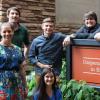 Now entering its fifth year, the Research Experience for Community College Students (RECCS) program, hosted by the Cooperative Institute for Research in Environmental Sciences (CIRES), gives Colorado community college students hands-on research opportunities as they look ahead in their careers.
Now entering its fifth year, the Research Experience for Community College Students (RECCS) program, hosted by the Cooperative Institute for Research in Environmental Sciences (CIRES), gives Colorado community college students hands-on research opportunities as they look ahead in their careers.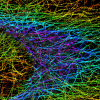 A 3D nano-imaging company built around CU Boulder technology and faculty just secured $1 million in investment funding from Luminate, an international startup accelerator focused on next-generation optics, photonics and imaging.
A 3D nano-imaging company built around CU Boulder technology and faculty just secured $1 million in investment funding from Luminate, an international startup accelerator focused on next-generation optics, photonics and imaging.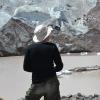 CU Boulder's earth science and atmospheric science departments both ranked No. 1 overall among world universities in the ShanghaiRanking Consultancy's 2018 Global Ranking of Academic Subjects (GRAS), which was published today. The university also scored highly in a dozen other academic categories, highlighting the breadth of impactful CU Boulder research.
CU Boulder's earth science and atmospheric science departments both ranked No. 1 overall among world universities in the ShanghaiRanking Consultancy's 2018 Global Ranking of Academic Subjects (GRAS), which was published today. The university also scored highly in a dozen other academic categories, highlighting the breadth of impactful CU Boulder research.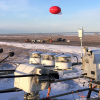 Drones and other unmanned technologies can cost-effectively collect weather data in harsh or remote environments and contribute to better weather and climate models, according to a new study from CIRES and NOAA researchers. Unmanned aircraft and instrument-bearing tethered balloons are helping fill in critical data gaps over difficult-to-sample surfaces in the Arctic.
Drones and other unmanned technologies can cost-effectively collect weather data in harsh or remote environments and contribute to better weather and climate models, according to a new study from CIRES and NOAA researchers. Unmanned aircraft and instrument-bearing tethered balloons are helping fill in critical data gaps over difficult-to-sample surfaces in the Arctic.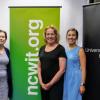 Google has announced a $1.5 million Google.org grant in support of CU Boulder's PhET Interactive Simulations, and rent-free space for the National Center for Women & Information Technology.
Google has announced a $1.5 million Google.org grant in support of CU Boulder's PhET Interactive Simulations, and rent-free space for the National Center for Women & Information Technology.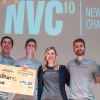 Boulder-based interactive toy and robot maker Sphero today announced the acquisition of CU Boulder’s 2018 New Venture Challenge champion Specdrums.
Boulder-based interactive toy and robot maker Sphero today announced the acquisition of CU Boulder’s 2018 New Venture Challenge champion Specdrums.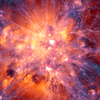 In a new study, an international team of researchers, including scientists from CU Boulder, located the last reservoir of ordinary matter hiding in the universe. This matter, also called baryons, makes up all physical objects in existence, from stars to the cores of black holes.
In a new study, an international team of researchers, including scientists from CU Boulder, located the last reservoir of ordinary matter hiding in the universe. This matter, also called baryons, makes up all physical objects in existence, from stars to the cores of black holes. CU Boulder ranked among the top 10 institutions worldwide in producing research and Earth and environmental sciences last year. The university also placed 50th among academic institutions globally in producing high-quality science, overall.
CU Boulder ranked among the top 10 institutions worldwide in producing research and Earth and environmental sciences last year. The university also placed 50th among academic institutions globally in producing high-quality science, overall.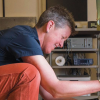 Alena Grabowski is helping a new generation of athletes imagine what’s possible and address the controversial question: Should runners with prosthetic legs be able to compete alongside non-amputees?
Alena Grabowski is helping a new generation of athletes imagine what’s possible and address the controversial question: Should runners with prosthetic legs be able to compete alongside non-amputees? A new CU Boulder-led study sheds light on the genetic mechanisms that allowed sunflowers to undergo a relatively rapid evolutionary transition from wild to domesticated in just over 5,000 years.
A new CU Boulder-led study sheds light on the genetic mechanisms that allowed sunflowers to undergo a relatively rapid evolutionary transition from wild to domesticated in just over 5,000 years.

